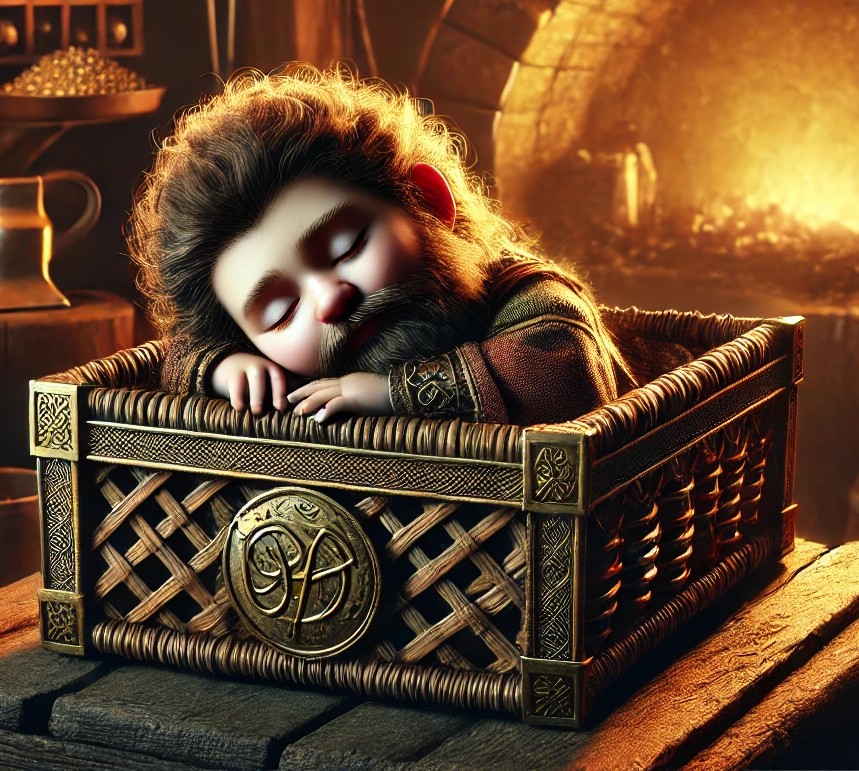Local Cargo Network
Created by Adam Tingley // Wreckerdwarf

Pladeholder Dwof by Katy Smith
The Nitty Gritty
The rundlets themselves have a ridged gear-like clasp welded to the top which links cosily into a runner plate. The street rail is run by a continually moving chain which the runner plate meshes into. Each runlet has an openable hatch on each of its sides. On the inside top casing of each runlet is three columns of levers that can be turned either left or right. The first column indicates the direction of travel upon hitting each junction in sequence. The second column dictates the level the destination is located on as well as a locking mechanism. The third column indicates when the rundlet should derail on its final loop. When the cargo is loaded this lever can be set to lock the rundlet from the inside upon closing the side hatch, only to be opened upon reaching its destination where it will reset and unlock. These levers control rigid metal bolts on the top of the rundlet. At each junction, there is a series of vertical lifts destined for each level. The bolt for the level of the destination is able to fit through the slot of its target lift but not through any of the other levels. If it is not on the correct level then it collides with a filter bar that turns the rundlet away from that particular exit. Similarly, this same system also controls if the rundlet moves from its starting loop onto another loop at junctions. When a rundlet reaches its destination it will derail from the main line and into a holding bay ready to be picked up by its recipient. Then it can be restocked or emptied and put back on the line. Return orders are very simple to handle as you just change the first and third column’s levers to the opposing positions. Taking care to reselect the correct level of course. Larger establishments will hold a higher number of holding bays to handle more deliveries. A usual system will have a main central loop with a number of smaller loops that branch off and cover an area slightly further out. Each of these loops track directly along the ceiling of the cobbled street walkways. Prior to the invention of liquid flame this system would not have been possible due to the soot and pollutants that would otherwise endlessly clog up the chains.The Systems Uses
This network of rundlets endlessly moving around the city provides a cheap method of transporting goods. In a craft centric dwarven economy there is endless need for the transporting of goods and components to another artisan that is specialised in a certain profession. In times of conflict and war, it’s also utilised by the military to quickly transport ammunition to defensively stationed dragoons or mortar crews defending the walls at the front lines of the incursion. In peacetime it’s commonly used as a method of transporting food, letters, medicines and in some cases even dwarven children (Although this isn’t recommended).This article was created for my first World Ember - I hope you enjoy my writings and I'm looking forward to hearing your feedback!





I was going to ask if people ever hop onto it, but I kind of like the image of people delivering their babies for babysitting with it. XD This is a fun system.
Explore Etrea | WorldEmber 2025
Dwarves do hop in sometimes, mostly when drunk - but it's a bit of a bumpy ride